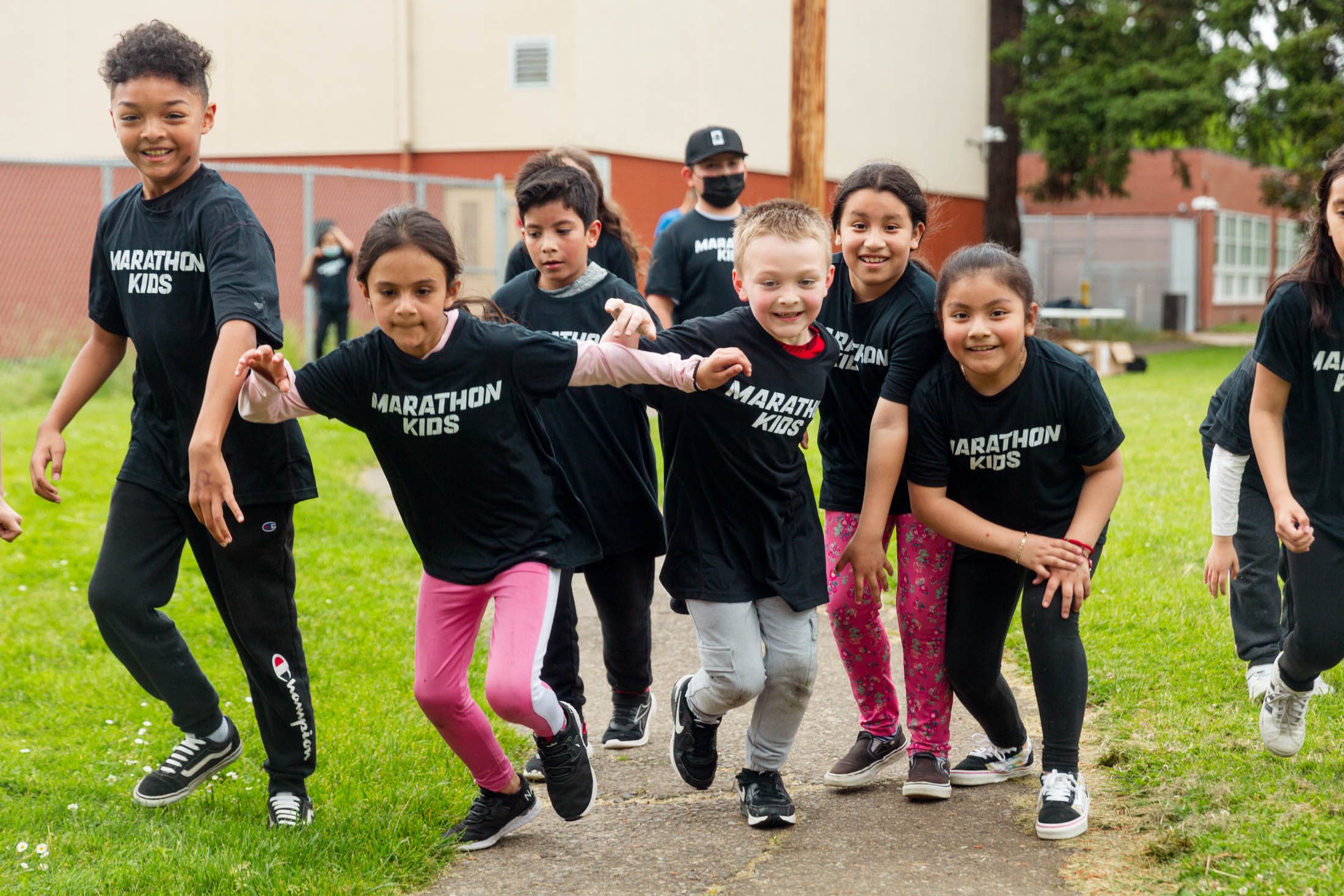
PE Games for Small Groups
By Catherine Morris
Searching for PE games for small groups and striking out? Whether you’re seeking new ways to keep your kids active at home or heading up a class with just a handful of students, it can feel as if most sports and games are best suited for larger groups of kids. You might struggle to find activities that can be adapted to your little crew, but there are actually plenty that are fun in smaller numbers.
Small groups are also wonderful for teambuilding and honing both communication and cooperation skills. Plus, in many cases, kids get more chances to build their motor skills—which means everyone gets to be a VIP. From classics like Four Square to silly fun like Tissue Box Race, here are seven of the best PE games for small groups. May the games begin!
Parachute Ping-Pong
Kids stand in a circle, holding the edges of a parachute. (Don’t have a parachute? Use a bedsheet instead!) Place a ping-pong ball or any other small, lightweight ball on the parachute and have the kids raise and lower their edges, trying to keep the ping-pong aloft when it comes near them and send it off someone else’s edge if possible.
Simon Says
This one’s a classic for a reason—it’s just silly fun! Have “Simon” direct the group to perform various activities such as jumping jacks, mountain climbers, burpees, planks, squats and running in place. Everyone will crack up when someone accidentally does something Simon didn’t technically say to do. With a small group, there’s no need to count players out when they make a mistake; otherwise, the game will be over too fast. Staying in makes it more fun for everyone and ensures that everyone gets a good workout.
Up and Down
This game can be played with as few as two people, and works well with teams of two or three. A team of two children stands back to back, either interlocking arms or holding their hands in the air. The team tries to sit down and then stand back up again, all without losing contact with each other or falling down. If there are enough people in the group, once the teams of two have mastered the up-and-down movement, you can switch it up by adding a third into the mix or having one team link up with another. Teams can keep linking together until the whole group is sitting and standing together. This is a great activity for building both core strength and cooperative skills.

Pop-up Balloons
Blow up a balloon and tell children there are only three rules: The balloon must stay in the air, it can’t pop, and everyone must keep moving. Other than that, it’s open to interpretation! Kids can run, leap, twirl, somersault and dive as they go after the balloon. They can pop it up with their hands, heads or feet—whatever it takes to keep it aloft! This game is actually more fun with fewer players since everyone must actively contribute. If one balloon is too easy for your crew, blow up a few to keep the kids hopping!
Balancing Act
Give each player something to balance on their heads, such as a beanbag or stuffed animal, and turn on some music. As long as the music plays, the players must move around as quickly as possible while balancing their objects on their heads. When the teacher or leader pauses the music, everyone must freeze until the music starts again. If someone loses their object, they must freeze in place until another player comes to grab it and place it back on their head. To encourage even more teamwork and that helper spirit, award extra points to players who look for opportunities to assist frozen players.
Tissue Box Race
Two tissue boxes per player are needed for this simple game. To play, players slip their feet into their tissue boxes (one box per foot) and line up at the starting line. If you’re playing indoors, kids can race by sliding across carpet, wood or tile. If you’re outdoors, they can crack each other up by running clumsily toward the finish line.
Four Square
At least four players are needed to play this classic game, although it can work with two or three. Mark off a two-by-two grid of squares on the floor with chalk or masking tape. One child stands in each of the four squares; the person who starts the game bounces the ball in their own square once before tapping it into another player’s section. Players should let the ball bounce once in their own square before tapping it into someone else’s. If someone lets it bounce twice, misses it or sends it out of bounds, the play is over and the game resets. If there are enough players in the group, someone else can take the last player’s spot; otherwise, the game can keep resetting, cycling through players to start each new play.
ABOUT MARATHON KIDS
Marathon Kids is on a mission to get kids moving. The nonprofit organization offers free physical education programming through Marathon Kids Connect, a cloud-based PE and run club management platform that includes a mobile app for digital activity-tracking.
Make Marathon Kids Your PE Partner